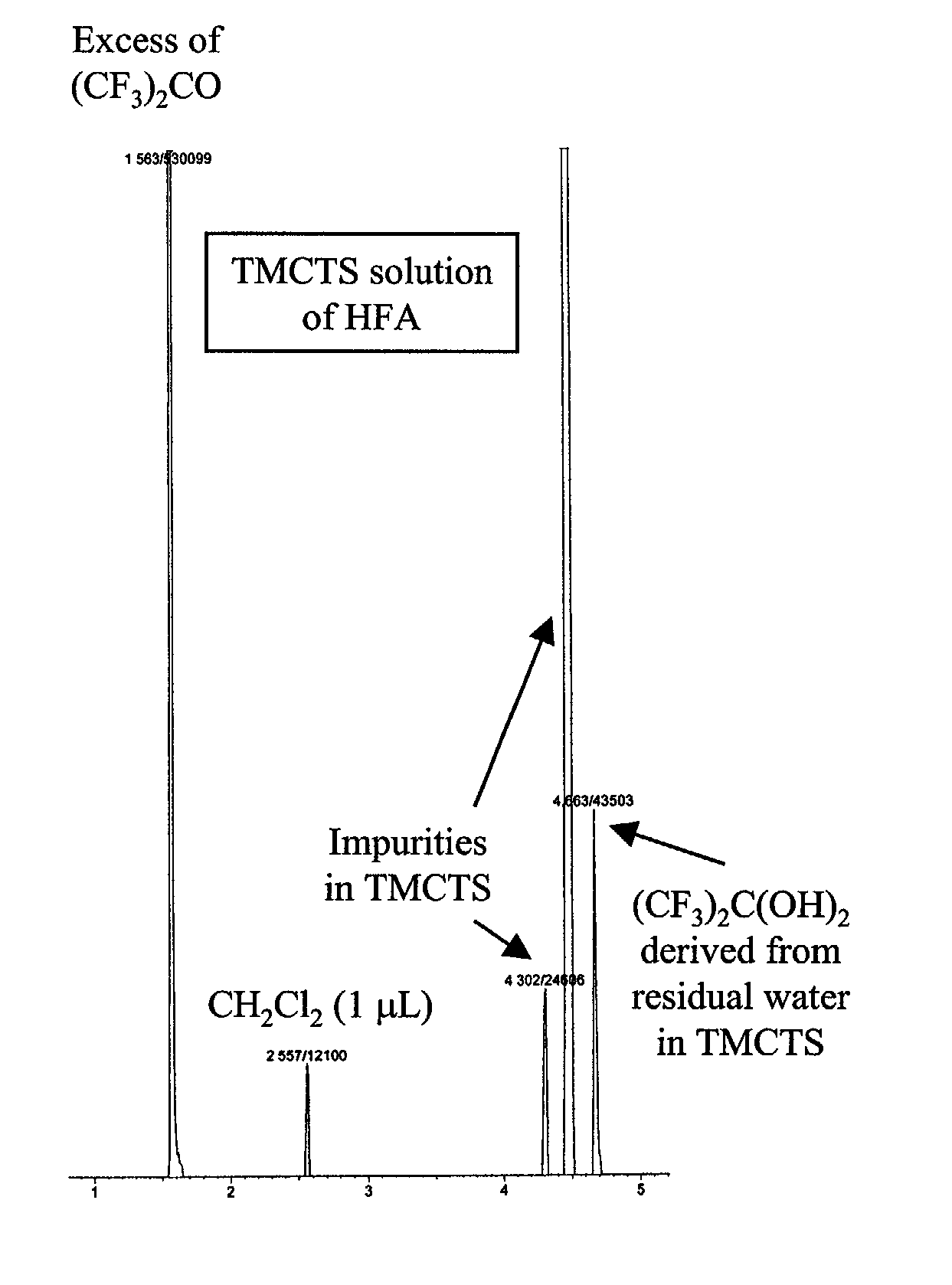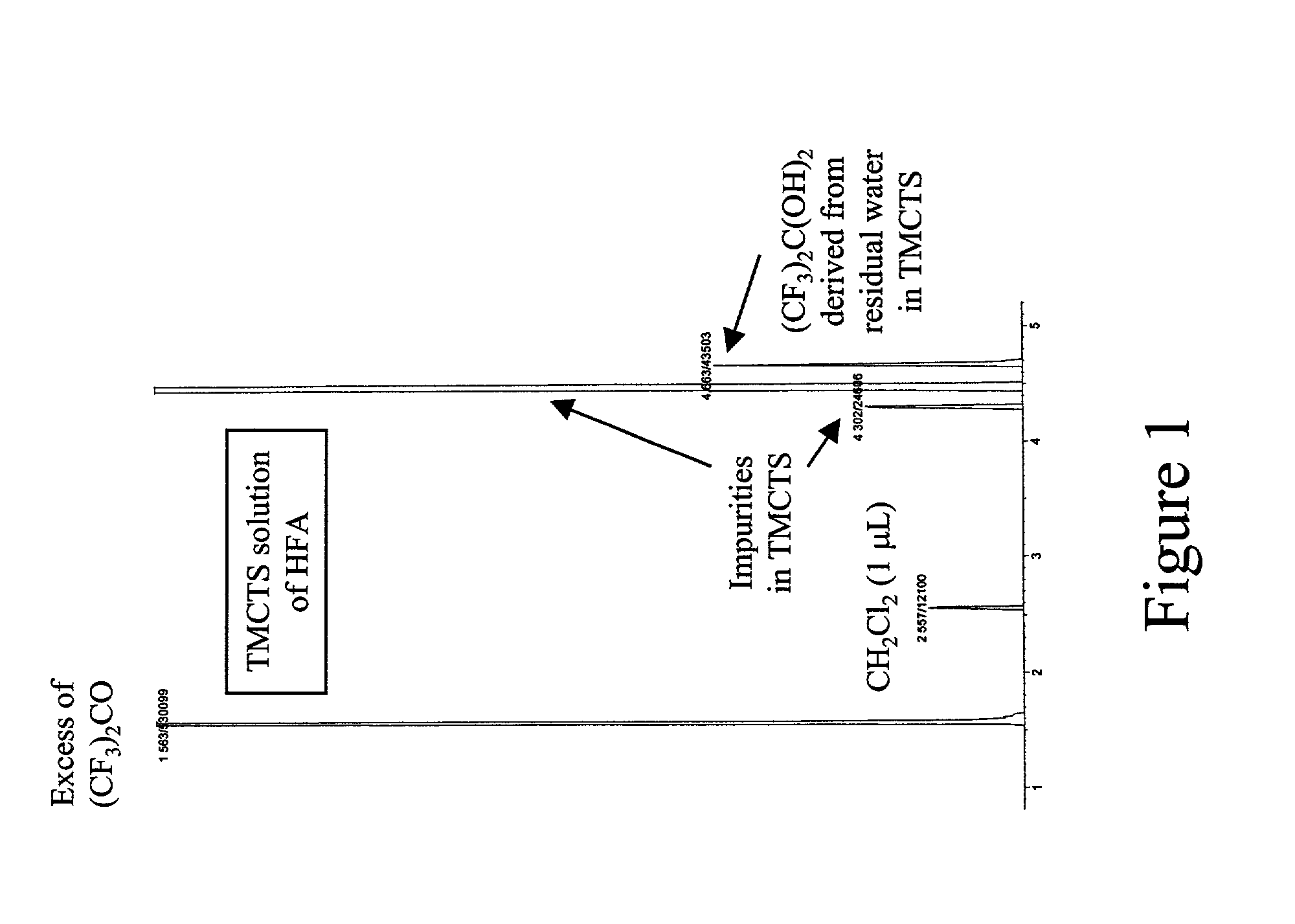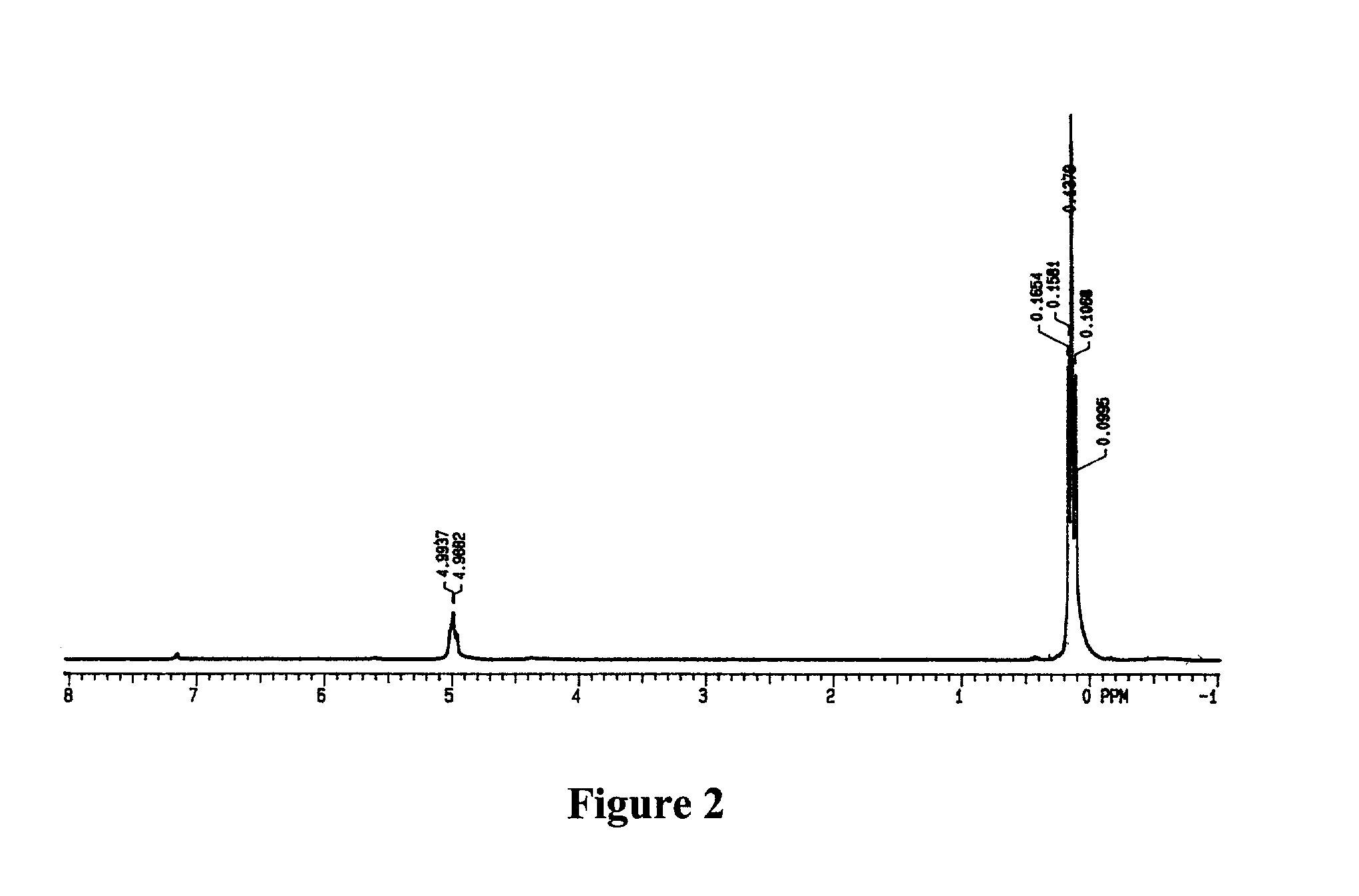Method for trace water analysis in cyclic siloxanes useful as precursors for low dielectric constant thin films
a cyclic siloxanes and trace water technology, applied in the field of trace water analysis in cyclic siloxanes, can solve the problems of low packing density, low k value, power dissipation, etc., and achieve the effect of accurate and precise measurement of water concentration
- Summary
- Abstract
- Description
- Claims
- Application Information
AI Technical Summary
Benefits of technology
Problems solved by technology
Method used
Image
Examples
example 1
Gas Chromatography Mass Spectrometer, Method Validation
[0092]Three analytical samples, including an analytical standard, all containing water, were measured using the water derivative of hexafluoroacetone method (HFA). For purposes of method validation, the same samples were also measured using the Karl Fischer titration method of water analysis. As shown by the results in Table 1 below, the HFA method produced water measurements relatively similar to the Karl Fischer water titration method. With respect to the analytical standard for water, the HFA method measured the water content with a higher accuracy, than did the Karl Fischer water analysis method.
[0093]
TABLE 1Comparison of Water analysis Results (in ppm)HFA MethodKarl FischerAnhydrous toluene9.511.5H2O saturated toluene276311Analytical standard (100 ppm)9591
example 2
Gas Chromatography Mass Spectrometer Precision Validation
[0094]To determine the precision of the HFA method of water analysis, an analytical standard of 100 ppm water is measured five times. Table 2 shows the results of the water concentration measurement as well as the mean and the mean error.
[0095]
TABLE 2Analytical Standard Measurement of 100 ppm Water Sample by HFAMethodRun NumberWater (ppm)R (%)199.674.942292.942.144385.1010.398489.695.5665107.4813.165Mean94.98
example 3
Statistical Validation of HFA Method
[0096]To confirm the precision of the HFA method of water analysis, two samples from a single batch of purified tetramethylcyclotetrasiloxane (TMCTS) were measured five times each using the water derivative of hexafluoroacetone method of the instant invention. Table 3 shows the results of the water concentration measurement as well as the mean and the mean error for both samples.
[0097]
TABLE 3HFA Water Analysis of Dried TMCTSRunWaterRunWaterNumber(ppm)R (%)Number(ppm)R (%)110.6215.023112.032.278211.2410.062212.012.108313.8911.142312.173.469414.2413.943410.619.7945NdNd511.991.938Mean 12.497Mean 11.762
PUM
| Property | Measurement | Unit |
|---|---|---|
| temperature | aaaaa | aaaaa |
| dielectric constants | aaaaa | aaaaa |
| dielectric constant | aaaaa | aaaaa |
Abstract
Description
Claims
Application Information
 Login to View More
Login to View More - R&D
- Intellectual Property
- Life Sciences
- Materials
- Tech Scout
- Unparalleled Data Quality
- Higher Quality Content
- 60% Fewer Hallucinations
Browse by: Latest US Patents, China's latest patents, Technical Efficacy Thesaurus, Application Domain, Technology Topic, Popular Technical Reports.
© 2025 PatSnap. All rights reserved.Legal|Privacy policy|Modern Slavery Act Transparency Statement|Sitemap|About US| Contact US: help@patsnap.com



